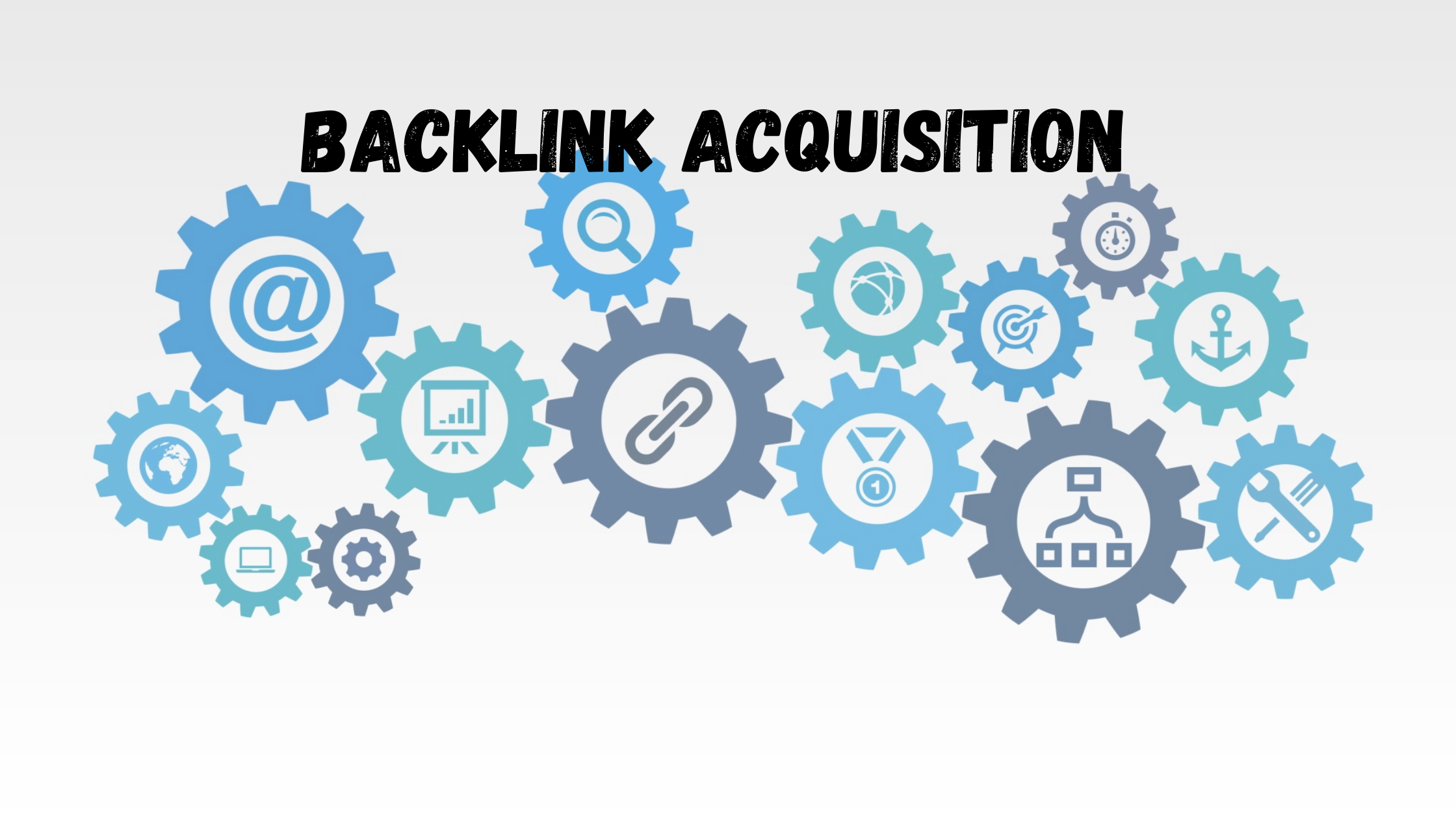For those focused on enhancing their website via search engine optimization, understanding how to get backlinks is a critical step in the process; Arguably, the most important step.
It’s often overlooked because it’s a manual process that takes genuine time and effort (we’d be lying if we said this process didn’t take a backseat in the early days of Rubicom).
For those just getting started, backlinks are any link that directs traffic to your website from an external website/source. Your ultimate goal in digital marketing is to drive traffic to your website and convert visitors to customers, acquiring backlinks greatly helps those efforts.
This post will discuss how to deploy a backlink acquisition strategy by leveraging two different marketing tools:
These are two separate marketing tools that even compete with each other, but also complement one another well when used correctly.
Let’s dive in.
Some Metrics that Matter
Before getting into how to start leveraging these tools, it’s important to better understand a few metrics that matter before learning how to get backlinks for your website. If you’re already familiar with these metrics, feel free to skip to the next section.
E-A-T Algorithm: Often discussed by Path Interactive’s SEO Director Lily Ray, the E-A-T method stands for expertise, authority, and trustworthiness within a website. The more your website establishes all three of these categories, the better off you’ll be within your SEO rankings (although Google won’t explicitly tell you that).
Domain Authority Score: The best way to understand domain authority score is by understanding how well your website has established expertise, authority, and trustworthiness within your industry. The websites that have established this criteria are the sites that you’ll ultimately want to gain backlinks from. Essentially, these are the higher quality websites within your industry; the higher the score, the better the authority of the domain.
Toxicity/Spam Score: there are a number of factors that SEMrush and Moz take into account when calculating the spam/toxicity score of a website. Although the score doesn’t always reflect exactly whether or not the site is spammy/dangerous, it does give you an idea of websites that are trustworthy and are worth targeting for a backlink.
The takeaway from this portion is that you’ll want to target backlinks from higher authority websites with a lower toxicity score (trustworthiness).
Now after all of these marketing metrics you’re probably wondering what all of this stuff even means and how to use it. Let’s go into how to leverage the tools and metrics discussed to implement a backlink acquisition strategy.
Generate Quality Content that Drives Value
One more thing, you can’t obtain quality backlinks without generating original, high quality content that gives your targeted backlink website a reason to actually link to your website.
What type of content should you create?
- Videos
- Blog posts
- Infographics
- Podcasts
Anything that will inform a target audience and engage the users that are consuming the content is worthwhile for your backlink acquisition efforts; Not only because it helps drive traffic to your website but more importantly provides value to your target audience.
As SEO consultants continuously tell you about optimizing for algorithms that Google rolls out (us included), the organizations that generate high quality content in the end will ultimately drive traffic to their site as the algorithms will value quality more than any other factor in the years to come.
Leverage the Mozbar to Conveniently Understand Metrics
The Moz bar will allow you to easily view the Domain Authority and Spam Scores of a website as you’re searching for websites that you’d like to obtain a backlink from. Here’s how to get started.
1. Add Moz Extension to Google Chrome Browser
2. Click tools and settings within the Moz Bar in Chrome
4. Make sure the Moz bar is active on your Google Chrome extension and you’ll now see the below metrics automatically populate whenever you visit a webpage.
*Use the numbers chart on page one to determine which Domain Authority (DA) and Page Authority (PA) scores to target. Keep this active as you navigate pages.
Page Authority: Developed for that specific page on your website
Domain Authority: Developed for the entire website as a whole based on collection of pages
Now for every page that you navigate through on a site, you’ll have convenient visibility into:
- Page authority
- Domain authority
- How many links that page has (more links can assume that other pages find it valuable enough to link to)
- Spam/toxicity score
Now it’s time to leverage SEMrush to further identify which websites to target and deploy an outreach strategy for backlink acquisition.
Leverage SEMrush for Backlink Acquisition
1. Log into SEMrush and click on Project
2. Use backlink audit to determine how many backlinks you currently have, and Link Building Prospects to identify ideas on websites to acquire backlinks from.
The link building prospects literally give you an entire list of websites that you should target for backlinks based on your content, industry, and expertise.
3. Click ‘Link Building’ and Go to prospects
4. Leverage AS (Authority Score) to determine which sites to target (cross-reference with Moz bar PA/DA)
You’ll now have access to websites that would potentially be a good backlink target, and the ability to send an outreach message directly from the SEMrush program. This enables you to conveniently identify targets and begin your outreach efforts all within one tool.
6. Use the Competitor analysis to further identify backlinkl targets
By understanding where your competitors get their backlinks from, you’re given insight into which websites find it worthwhile to link to organizations that provide the same exact value that you do. You’re already competing for customers with them, so you might as well compete for backlinks as well.
7. Finally, begin sending your outreach messages from the platform.
Before you start firing messages however, let’s go through a few assumptions.
Assumptions
- You’ve identified key pieces of content and URLs within your website that you’d like to target
- The targeted content and URLs provide value to the websites that you’re reaching out to asking for a backlink
- Ultimately, you’ve done your research and aren’t firing blindly
Identifying the Appropriate Contact
To increase your chances of success, you’ll need to complete some research to ensure you’re getting your message seen. Some options you have include:
- Target the Author of the post
- Submit contact forms within the website
- Reach out and ask for a specific contact
Once you’re sure that you have all of the information in place, here is an example of what your messaging might look like.
Messaging Example
Hi <First Name>,
I’m reaching out because I was looking through <piece of content/article/page on their site>, and I thought it fit perfectly with this piece we wrote on <insert topic of desired article for backlink>.
Would you be interested in linking to it? We’ll even provide an additional piece of content that adds value to your site (we’re open to suggestions here).
Regardless, thank you for your time and I look forward to the opportunity of speaking with you.
Have a Great Day!
Remember, the receiver of these messages don’t want to read anything that looks like it could’ve easily been sent out to 100+ people at the same time. Your message needs to be personalized.
Messaging Ideas
- Leverage Personalization such as: things you have in common, sports teams, schools, current events, etc.
- Keep it personal: people ultimately want to hear from other people, not robots
- Add value: structure the message so that it’s clear that we’re adding value to them, NO ONE CARES ABOUT US – IT’S ABOUT THEM
Tie the Platforms Together
To recap, you’re targeting websites that have a higher authority score in combination with a low toxicity/spam score.
Leveraging the Mozbar extension will allow you to easily identify targets as you browse the web, while leveraging SEMrush backlink audit enables you to strategically identify websites and deploy an outreach strategy to obtain links.
If you need help better understanding how to get backlinks, or are just looking for some more ideas on messaging, reach out and let us know.

Gary McConnell Co-founded Rubicom Digital in 2019 with a goal of providing digital marketing consulting services in the B2B space.
Gary continues to serve as the Marketing Director of a Data Center-focused IT Provider, VirtuIT Systems.


1 thought on “How to Get Backlinks for Your Website”
Comments are closed.